
Resource Guide:Pacific Coast Iris

Contributor
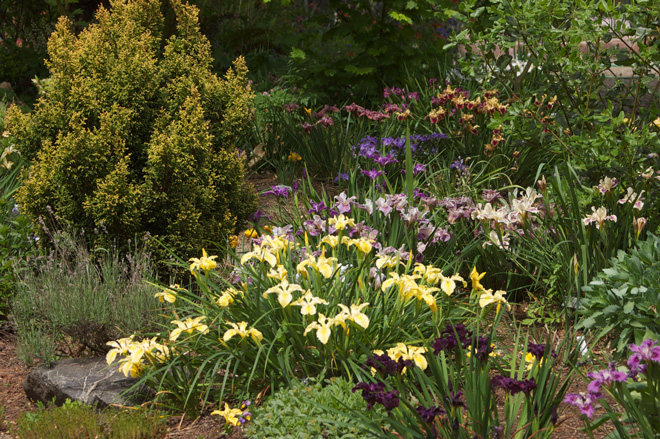
Pacific Coast iris (Iris, beardless section Californicae and cultivars, Iridaceae)
History: Pacific Coast iris are native to the West Coast, from Southern California to southwest Washington, in and west of the Sierra Nevada, Cascade, and Coast ranges. Highest diversity of species is in Northern California and southern Oregon. First cultivated and hybridized in England in the late 19th century from species seed collected in California. In the early 20th century, gardeners in California and Australia began to hybridize, starting with wild seeds from I. douglasiana and I. innominata.
Best features: Evergreen plants with brilliant jewel-toned flowers in a wide color range with intricate patterning. Suitable for border planting at the front to middle of the beds, for dry meadows with one annual fall mowing, or open woodland gardens with partial to full shade. Generally disease resistant with little annual maintenance needed to keep in good condition. Deer do not find PC iris palatable, though they will eat the occasional flower bud or tug out a seedling to taste. As with other irises, slugs and snails eat flowers but do not damage the vegetative parts of the plants.
Hardiness: Zones 6–10. On the West Coast, PC iris are grown widely in gardens from southern British Columbia to Southern California, west of the Cascade and Sierra Nevada ranges.
Conditions: Pacific Coast iris require well-drained, acidic soils that are damp to wet in winter or buried under snow, and somewhat moist to dry in summer. They prefer full sun along the Northwest coast, to full shade in very hot dry climates. In the Central Valley of California, they need shade and summer water. PC iris flower best if divided every three to five years. Optimal planting and transplanting times are late fall to winter and early spring to late spring; to improve success, check for fresh white roots before transplanting. Fertilizers should be acidic.
Bloom time: Late winter to early summer, with a few cultivars flowering mid-winter, and some in July. The occasional plant reblooms in fall.
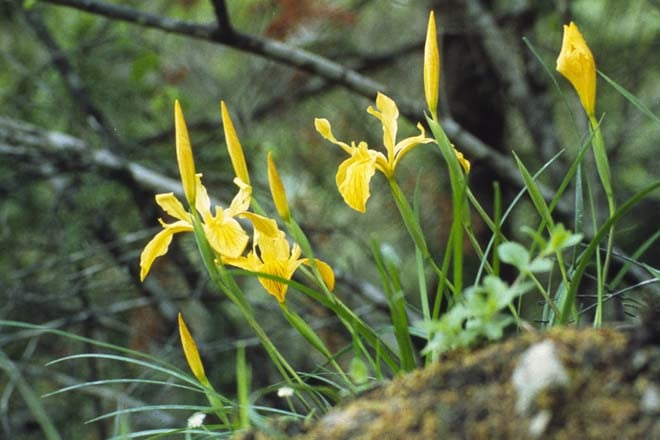
Species: Douglas iris (Iris douglasiana) grows along the coast from southern Oregon to southern California in coastal meadows in the salt-spray zone. Colors range from white, yellow, pink, blue, and lavender to purple, usually with a yellow signal.
Golden iris (Iris innominata) is native to southern Oregon and extreme northern California. It has yellow to golden flowers with dark veins and is hardier than most PC iris species. The first named PC iris selection, ‘Aureonymphe’, was an Iris innominata selection in England.
Tough-leaved or Oregon iris (Iris tenax) is native to Oregon and southwest Washington. Like I. douglasiana it has a very wide range of flower colors and like I. innominata is very cold tolerant. Falls usually have darker veins with a gold to yellow signal.
Playing Favorites
PC iris typically flower from seed in two years, so new plants and hybrids can be developed relatively quickly. There are hundreds of hybrids available. Current hybridizing programs in the US and Australia now grow new PC iris cultivars that are 50 or 60 generations removed from the original species, with color and patterning more spectacular with each generation. The following list of hybrids is a very brief introduction to this colorful section of iris:
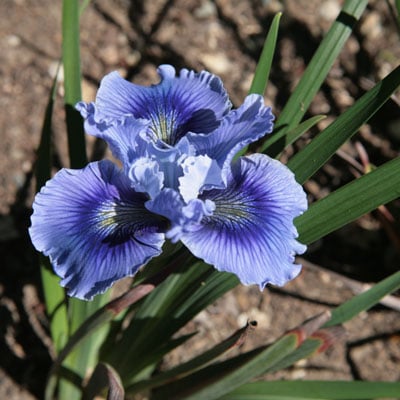
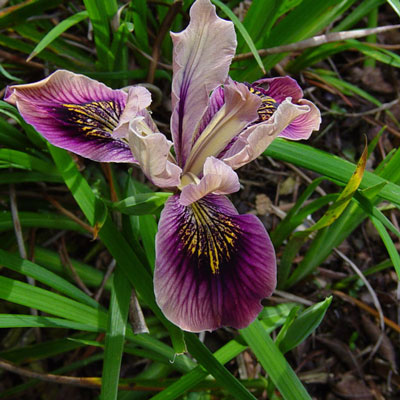
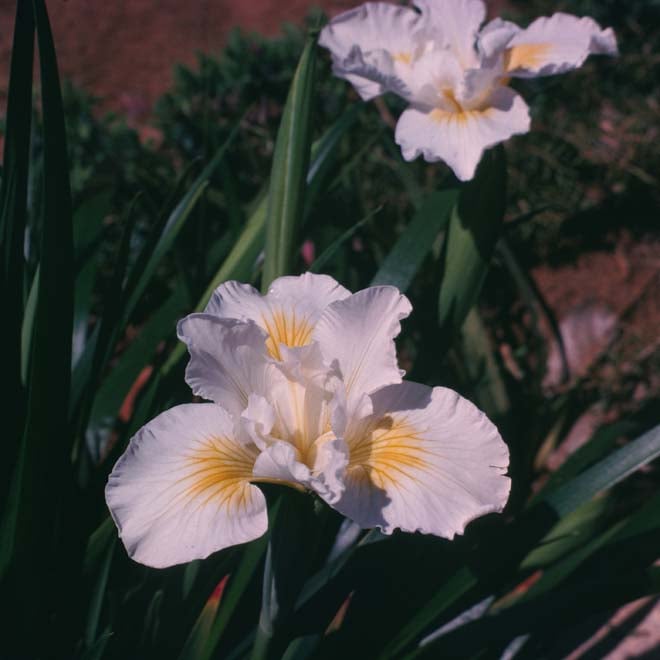
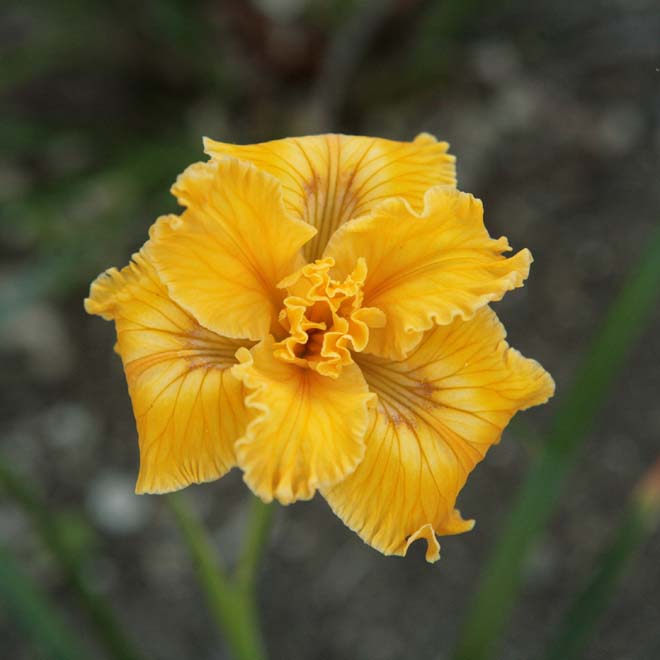
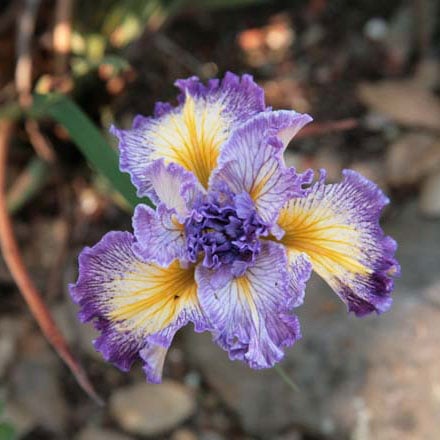
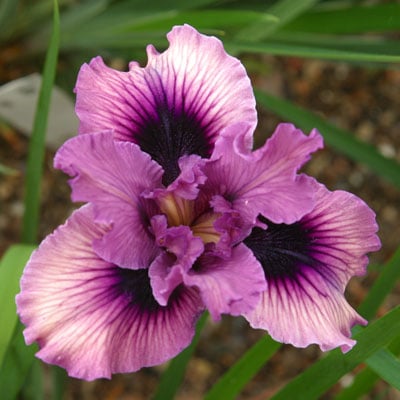
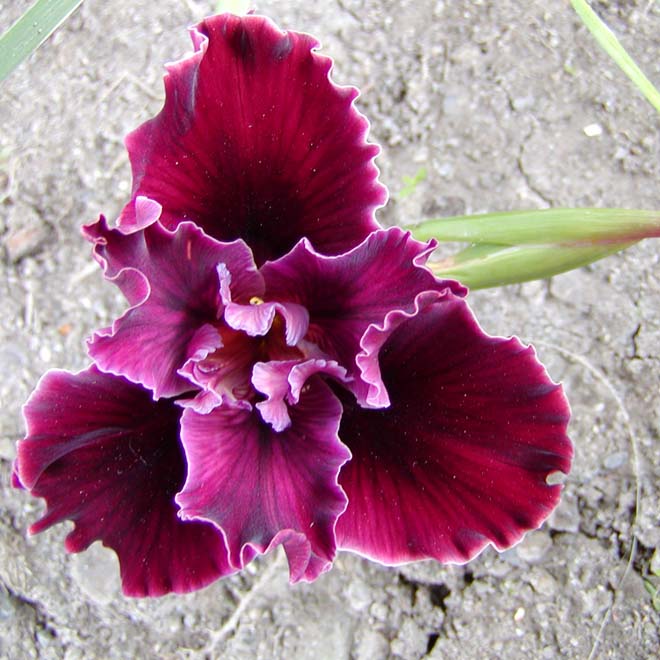
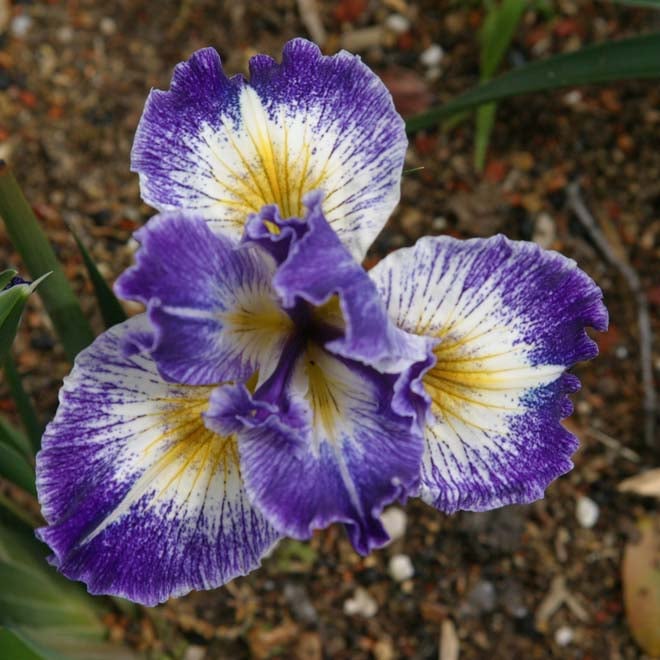
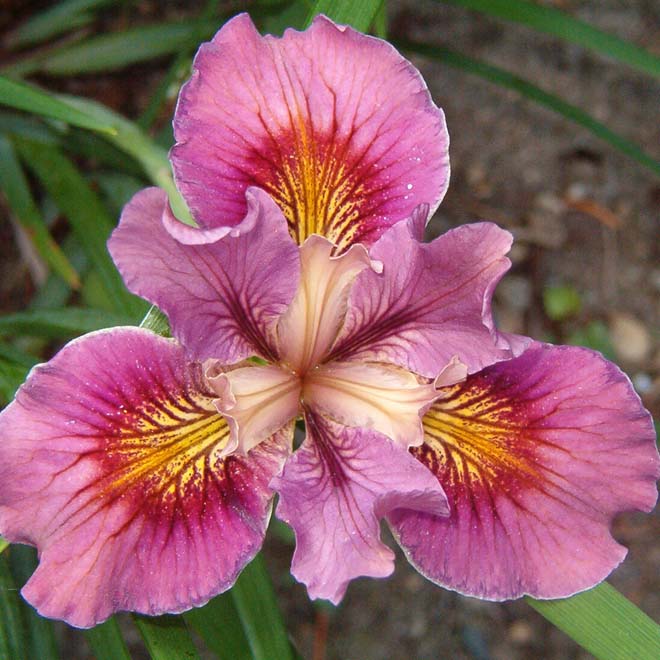
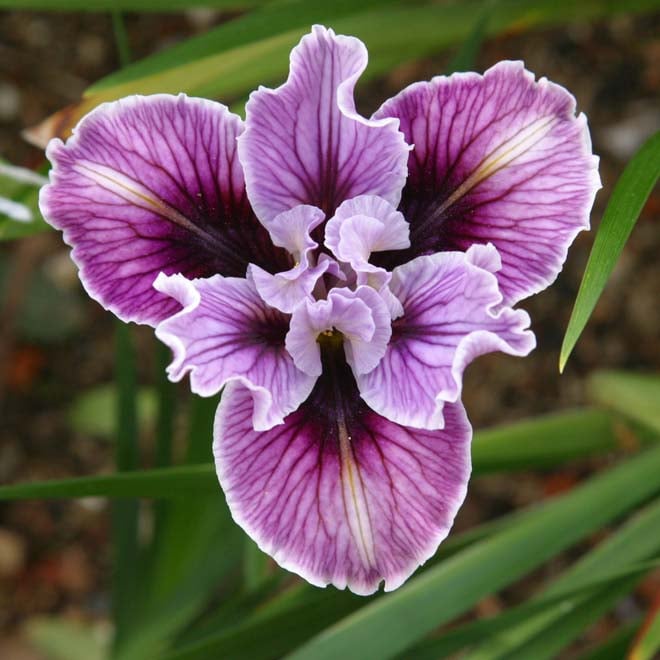
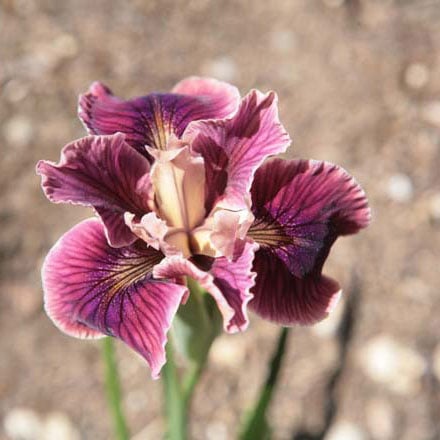
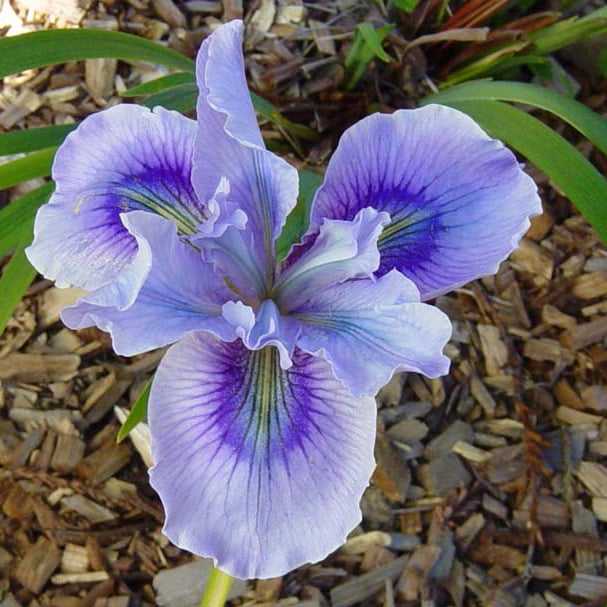

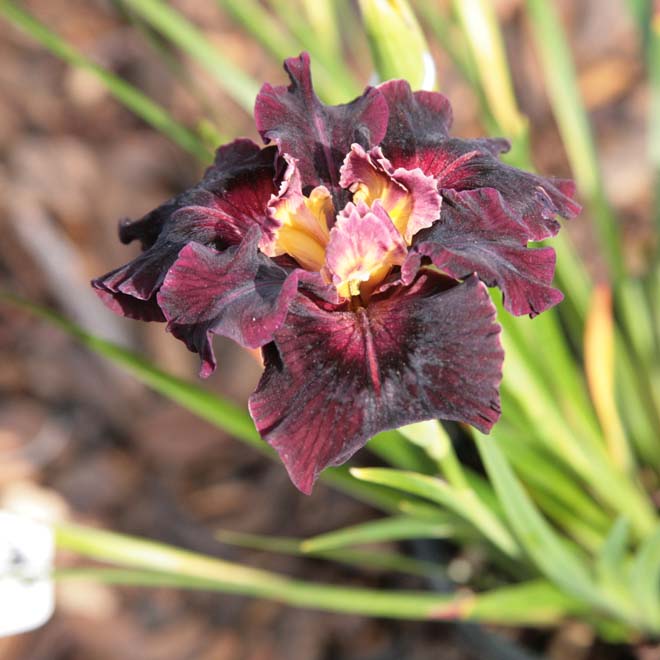
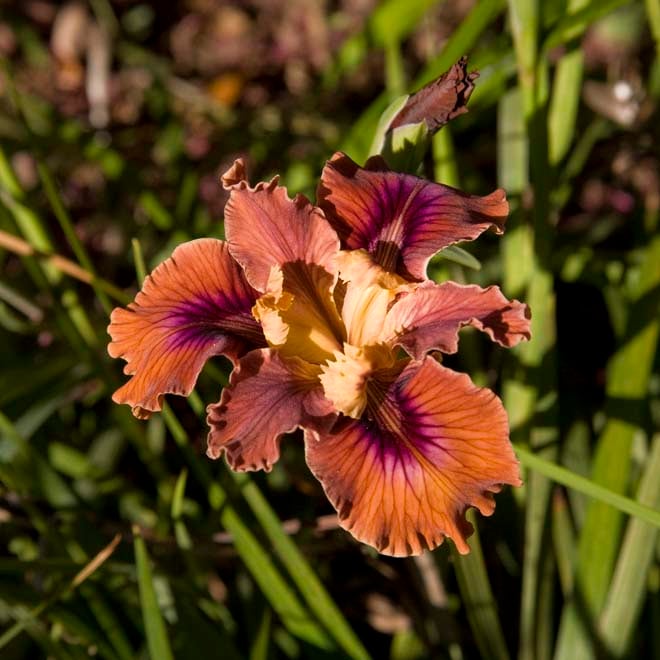
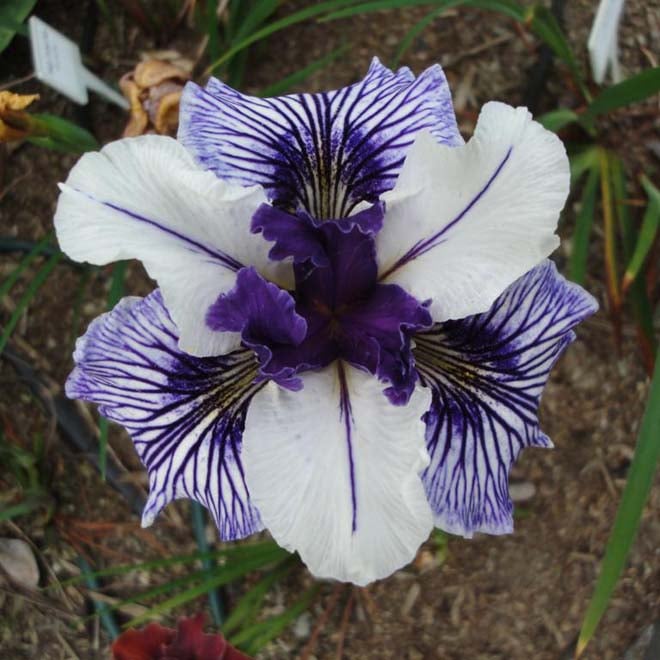
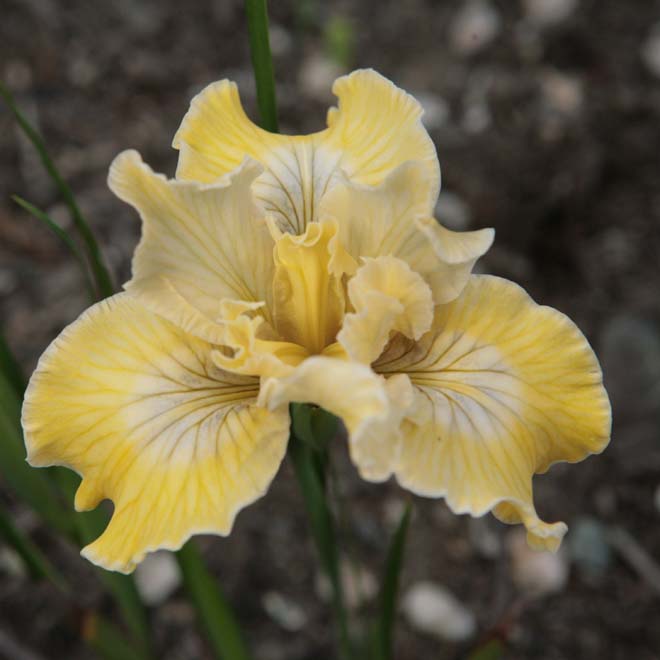
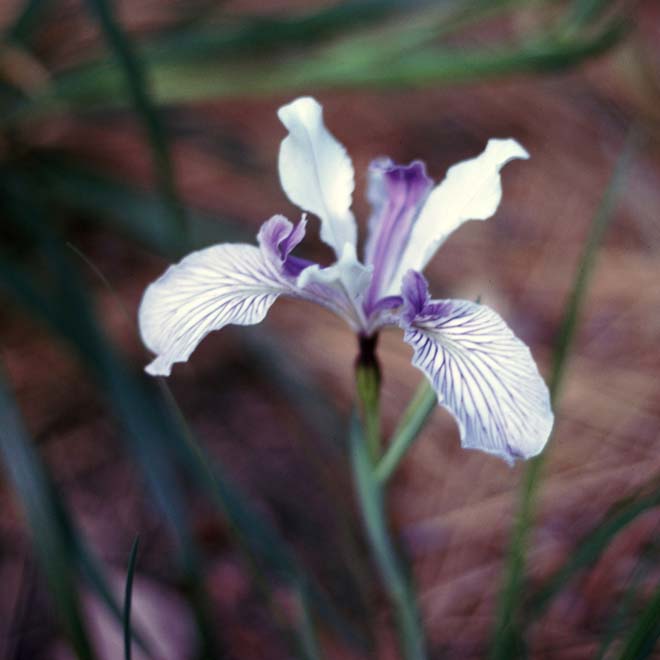
Get Growing
The Society for Pacific Coast Native Iris (SPCNI) advances the study and cultivation of Pacific Coast iris. SPCNI maintains a registry of hybrids and hosts an annual online seed sale for members. SPCNI also posts descriptions of species and information about growing PC iris. www.pacificcoastiris.org.
Species Iris Group of North America (SIGNA) includes PC iris in its annual seed sales, and has photos of several species and hybrids in the online iris species gallery. www.signa.org.
American Iris Society (AIS) includes PC iris species and hybrids in an online iris encyclopedia; each entry includes photos and descriptions. This encyclopedia is quickly becoming the go-to place for online information on iris species and hybrids. For more information see www.irises.org.
Many nurseries in the west offer at least a few plants, and many nurseries offer several registered varieties and their own seedlings, including:
Leonine Iris Nursery, Seattle, Washington, www.leonineiris.com
Cascadia Iris Gardens, Woodinville, Washington, www.cascadiairisgardens.com
Wild Ginger Farm, Beavercreek, Oregon, www.wildgingerfarm.com
Bay View Gardens, Santa Cruz, California
Matilija Nursery, Moorpark, California, www.matilijanursery.com
A number of seed companies offer seeds of one or more species; many of these are unregistered hybrids. Plants are available at many iris nurseries and native plant nurseries. An annual list of those nurseries offering more than 4 species and 10 registered hybrids is printed in the SPCNI publication, Pacific Iris.
Share:
Social Media
Garden Futurist Podcast
Most Popular
Videos
Topics
Related Posts

Low Maintenance Gardens – Better for Pollinators and People
Autumn 2022 “I come out every day. It’s therapy, my meditation.” Janet’s young garden transformed from overgrown, invasive plants to mostly natives. The dailiness of

Calochortophilia: A Californian’s Love Affair with a Genus
Summer 2022 I can chart the progression of my life by Calochortus. For the last two decades, at least. As a teenage girl growing up

Pacific Plant People: Carol Bornstein
Spring 2022 Public gardens play a key role in demonstrating naturalistic planting design, selecting native and adapted plants for habitat, and testing techniques for reducing

Add Year-Round Interest and Winter Blooms for Pollinators
Spring 2022 This article was created from an Interview by Merrill Jensen with Neil Bell in the Summer of 2021 for our Pacific Plant People











Responses